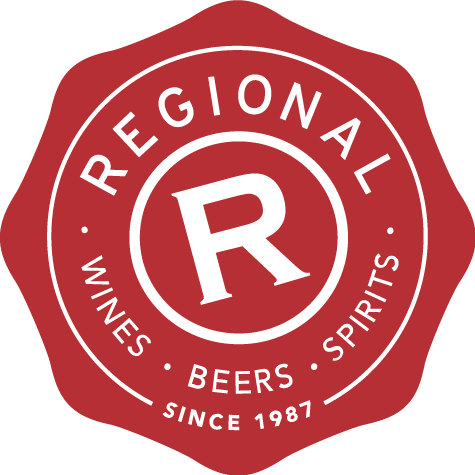
A Glenfarclas family affair...
In 2007 glenfarclas released a series of single cask vintage whiskies that traversed the decades back to the 1950s. They told the story of the family run distillery and were affectionately called the Family Casks. All those years ago (er, well, actually only 12 years ago) a complete set was reputedly bought in the UK for just over £6500. Today a Family Cask Trunk with fifty 200ml bottles of all the released vintages back to 1954 will set you back £100,000. Such is the way of whisky these days, with single malts once again fashionable, collectible, and ultimately, just down right expensive.
However, we know a thing or two about expensive whiskies here, and comparing these to, say, the recent batch #16 Glendronach single cask vintage release - they actually look quite affordable. Take for example the current Glenfarclas Family Casks 1990 (57.1%). At $390 it’s essentially half the price of the batch #16 Glendronach 1990, and so we find ourselves in an odd situation where $400 whiskies could be great value by today’s standards… but, of course, this is only if they taste any good.
Which brings us to a rather splendid looking, but not exactly cheap, tasting. We don’t do things by halves at Regional Wines and this tasting featured five Family Casks, the recently released 22yo 105 (still somehow at 60%) and two mystery whiskies which would perform a taste test experiment of sorts, that the unsuspecting attendees had unwittingly signed up to.
The whiskies shone like amber gemstones in a room that smelt like it had been doused in stewed fruits.
First up was the Family Casks 1998 from a 4th fill sherry cask, the lightest by ABV and one of the lightest by colour. It seemed appropriate to give it it’s best shot at the head of the tasting before the big guns came out, but despite its fine balance and savoury palate of calvados, fresh tobacco and green tinned fruits - it finished last.
Next was the GFC 1990, and gosh, it really did perform a fantastic Glendronach impersonation. This was like a dinner of confectionary with a now retired Willy Wonka who has picked up a penchant for PX and Partagás in his latter years. Stewed and dried fruits vyed for centre stage, but was it ultimately too sweet? Coming 3rd - the answer is probably yes.
Next was the dram to eclipse all others on the night - the GFC 2002. It was a fraction lighter to the eye than the 1990 and had more lift on the palate too. Bright and zesty, with medicinals and mothballs for extra complexity, this had none of the cloying sweetness of the 1990, and the balance of alcohol to flavour was spot on.
The next brace of whiskies, paired on a similarity of colour and abv, were the Family Cask 2000 and the first of our mysteries - the Adelphi Breath of Speyside 11yo. The latter is a mystery whisky in every sense, no distillery is mentioned on the bottle and I’m told that even those who work closely with Alex Bruce can’t prise the truth out of him. The general consensus is that it originates from Glenfarclas, so here was a perfect opportunity to put that belief to the test - however, it’s never that simple with single casks. Picking up a host of descriptors that it shared in common with many of the others, it was in many ways more Glenfarclas than the Family Casks 2000, which showed an array of earthy, mushroom and rancio qualities, that until then, had been absent from the tasting. Interestingly though, the Adelphi was the only one to receive specific mention of coconut. Was this the hallmark of a blend of both sherry and bourbon casks and which none of the Family Casks could boast?
Things ended with a bang with our second mystery, the Glenfarclas 20yo 105 (released in 2012) and the glenfarclas 22yo 105 - released last year. We seem to live in a generation where nothing is as good as it used to be (is this the curse of every generation?) and the standard Glenfarclas 105 is often criticised in this way. These two aged releases seemed to tell a similar story, the 20yo offering more complexity and balance than the 22yo which had sour notes and sooty elements on the finish. Could two aged whiskies released only six years apart really show a deterioration in quality - or did they simply represent a change in style, different chapters in the Glenfarclas story?
The Family Casks tell the tale of a well respected and much cherished distillery - and they do this in no uncertain fashion, each vintage and each cask playing its part. As for value, well, at the end of the day they’re worth what anyone wants to pay for them - like so many other commodities in short supply. Rest assured that we’ll keep doing our best at Regional Wines to make them available to taste, after all, this may be the only way some of us will ever get the chance.
We have one bottle of the Glenfarclas Family Cask 2000 #4076 56.4% and the Glenfarclas 105 22yo Cask Strength 60% available - click below to purchase.
Scores (for those who enjoy them)...
1 - Glenfarclas Family Cask 2002 #3768 58% - 9.66
2 - Glenfarclas Family Cask 2003 #002 59.3% - 9.5
3 - Glenfarclas Family Cask 1990 #9468 57.1% - 9.47
4 - Glenfarclas 105 20yo Cask Strength 60% - 9.13
5 - Adelphi Breath of Speyside 11yo 58.4% - 8.84
6 - Glenfarclas 105 22yo Cask Strength 60% - 8.44
7 - Glenfarclas Family Cask 2000 #4076 56.4% 8.22
9 - Glenfarclas Family Cask 1998 #3587 50.8% - 8.11
